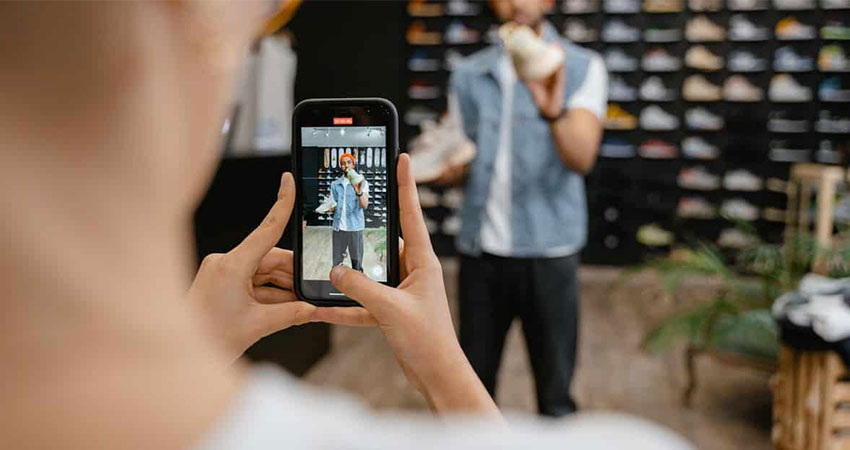Facebook is shutting down its livestream shopping venture two years in, putting its efforts behind the popular Reels short-form video platform as livestream shopping has yet to catch on here in a big way as in China, and retailers, brands and platforms need to rethink their approach.
Facebook said in a blog post that Facebook Live Shopping would shut down Oct. 1. The company told retailers they can still use Facebook Live to broadcast live events, but will no longer be able to create product playlists or tag products.
“If you want to reach and engage people through video, try experimenting with Reels and Reels ads on Facebook and Instagram” the company suggested, referring to the increasingly popular video format. “You can also tag products in Reels on Instagram to enable deeper discovery and consideration.”
Experts said the pullout was not surprising, considering TikTok’s recent decision to not expand livestream shopping to the U.S., and that consumers here couldn’t just flip over to shopping on platforms they used to engage with friends and see what was trending.
Katie Thomas, who leads the Kearney Consumer Institute, a think tank at global strategy and management consulting firm Kearney, said aside from differences between consumers here and in China, brands here weren’t putting enough investment into livestream shopping to make it a great, seamless experience.
“Consumers weren’t purchasing this way, so it was hard for brands to justify an increase in their investment,” Thomas said. “It’s a chicken-and-egg situation. Adding to this, in the U.S. we have a more fragmented market in terms of influencers.”
Thomas added that livestream shopping in China is a much more high-tech, polished affair, where in the U.S. brands went for authenticity to the point where it felt “more like it’s just a person on their iPhone.” However, she does think the potential is there and will be realized.
“I don’t think livestream shopping is dead by any means,” she said. “We’re going to see these brands come back, but they’re going to be working on it more behind the scenes and not saying too much about it until they figure it out.”
Deborah Weinswig, founder and CEO of retail advisory firm Coresight Research, said livestream shopping is a $20 billion market in the U.S., compared to $500 billion in China. Echoing Thomas’s comments, she said there needs to be more tech investment to make it a more seamless consumer experience, a worthwhile endeavor as “there’s appetite for it.”
“In the U.S. we still have some challenges, with most transactions happening on the retailers’ websites, not from the livestream itself,” Weinswig said. “So, in the U.S. in many cases, there’s still a lot of infrastructure to be built.”
Celia Van Wickel, senior director of digital commerce consulting at Kantar, said a third of U.S. consumers report watching some type of livestream, so the audience is definitely there. But for retailers and brands it requires a more focused, coordinated, integrated effort. In many cases, she said, it’s been event-driven and not a destination as in China.
“In the U.S., there have been various tactics at play trying to steer toward the trend,” Van Wickel said. “They run (livestreaming) out there and hope people find it, or do one-off events, like Amazon and Walmart. There’s a lot of livestreaming going on but no real call to action with shoppers. There are fragments of content, and it’s hard to ascertain audience and traffic across a plethora of methods.”
Facebook Live Shopping did have some successes, Van Wickel said, including an event done in partnership with Walmart featuring cooking influencer Pioneer Woman that garnered 6 million views. But it took a lot of cross-promotional effort to drive traffic and create a destination, she said.
“There’s a lack of integration across the path to purchase, a lack extension of (livestream shopping’s) value,” Van Wickel said. “It’s important to simulcast across the platform, and replay that livestream for additional impressions and reuse it as shoppable video. It could be on social media assets or retail websites. Amazon has sort of tried to figure that out, but they have not done it yet successfully.”

